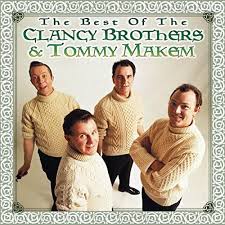I want to first thank my predecessor, Rick Ring, for his many fine reports on Irish immigration over the years that he served our division in that capacity. He deserves a hand of applause.
Tonight’s presentation is inspired in part by one of Rick’s recent presentations on the trailblazing labor leader Mother Jones. It highlighted an underappreciated aspect of Irish immigration.
I was reminded of that earlier today when I came across an academic paper in the Trinity College Dublin electronic library about something close to the heart of every man in this room: our mothers and grandmothers.
The paper authored by Janet Nolan might best be described as an essay that calls recognizing the role played by women in three centuries of Irish immigration to North America. It was published in the Journal of American Ethnic History in the summer of 2009 by the University of Illinois Press.
Nolan’s paper resonated with me because both my grandmothers were born in Ireland.
And the jobs they first worked in the United States in the early part of the 20th Century were as household domestics, as maids.
My mother’s mother often told me that she left the family farm in Galway because her family wanted to marry the old man up the road whose mother had finally died. Mary Delia Crehan was 19 years old when she sailed for New York and took a job as a maid for the wealthy Guggenheim family at their estate on the North Shore of Long Island.
My maternal grandmother never returned to Ireland and often told me she had no desire to do so because it was a backward country.
My father’s mother, on the other hand, made several trips back and forth between her family home in Tipperary and New York City as a young woman. After a one-month stay in the summer of 1911, Bridget King listed on the manifest of The Baltic, a White Star ocean liner, that her destination was 225 West 86 Street in Manhattan. That’s the address of the 13-story Belnord, a luxurious French Italian Renaissance-style apartment building that when it opened three years earlier in 1908 had the world’s largest residential courtyard and enclosed garden.
I’ve seen photos of that building at the opening of episodes of the TV program “Only Murders in the Building” on Hulu. The second season of the program, which stars Steve Martin, Martin Short and Selena Gomez, has scenes from the large courtyard. The Belnord’s website shows photos of beautiful black granite entrances and high-ceiling apartments.
Bridget worked in service to wealthy New York families.
I mention these two anecdotes because Janet Nolan’s paper highlighted how domestic service employment helped acclimate Irish women to their new homeland in the United States.
Immigration to the United States increased an Irish woman’s chances of marriage in an era when at least a quarter of all women of marriageable age were denied that opportunity in Ireland.
Instead, a significant percentage of Irish women turned to Catholic religious orders for their career vocations. My grandfather’s sister Katie Tumulty, who was also born in Ireland, professed vows as a Dominican nun named Sister Gervase and worked for much of her adult life in Ohio.
Irish-born nuns and sisters who made the transatlantic crossing were a significant part of that migration.
The diaries kept by two young women religious bound from Ireland to America can be found in a 1979 paper by Margaret MacCurtain and Donncha OCorrain that they titled, titled “Women in Irish Society” which documents the rigors and joys they found.
Janet Nolan called that study as “groundbreaking” and another reason for including women as an integral part of the transatlantic history of the Irish.
Here’s Nolan’s list of reasons for recognizing Irish women as part of the historical record:
First, the sheer weight of the number of women who were part of this mass migration.
Second, the wages paid to Irish women in America funded the further immigration of siblings and other family members. In this way, they influenced the choice of millions to leave their Irish homeland and cross the ocean to America.
Third, women were at the center of the Irish adaptation to their new American homes abroad. Usually unmarried and needing paid labor in the marketplace from the moment of their arrival, immigrant Irish women faced the same economic and physical challenges in the world of work as their male counterparts across the diaspora.
Fourth, part of the earnings of Irish women abroad was sent home to families in Ireland, underpinning the post-Famine Irish economy in the late 19th Century. Often, Irish farms depended on the remittances of their daughters in America for their very survival.
Fifth, their wages in the United States helped fund the infrastructure of the American Catholic Church, and Irish women religious helped build and staff the parish schools and Catholic higher education that assisted the assimilation and mobility of Irish America.
Sixth, Irish women on both sides of the Atlantic helped finance and organize the successful republican takeover of their homeland, the capstone of Irish nationalism, perhaps the second most important phenomenon in Irish history after emigration.
Nolan concludes, “The women and the men who left Ireland for America over the past four centuries transformed not only their own lives but also the history of Ireland and the United States. Women, at least as much as men, were the pioneers who forged Irish America. Their epic journey has at last begun to be examined in new ways.”
-30-


